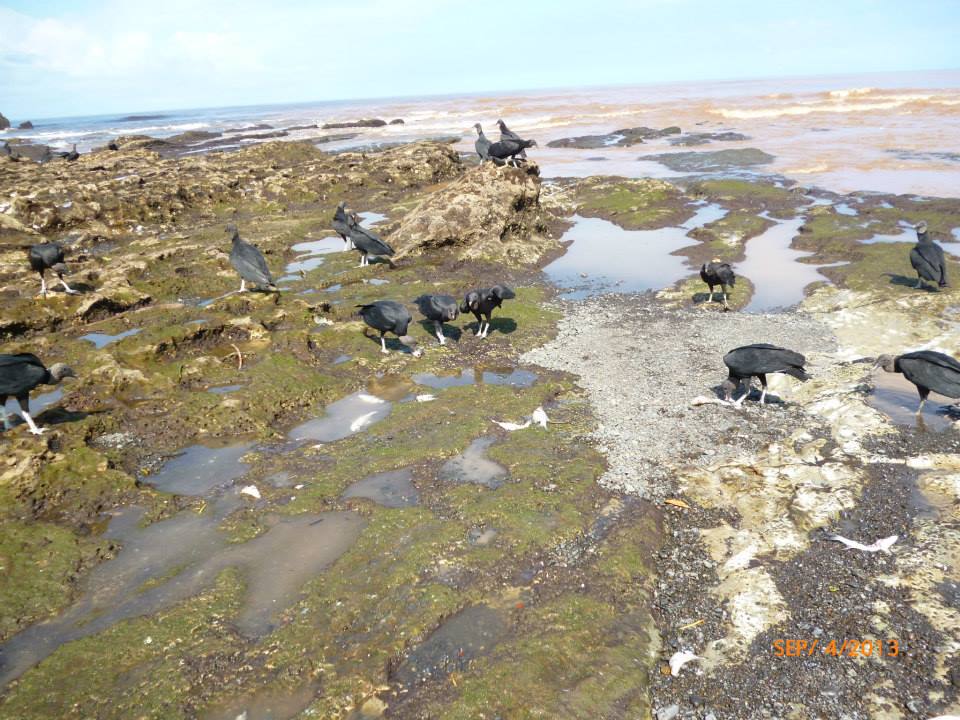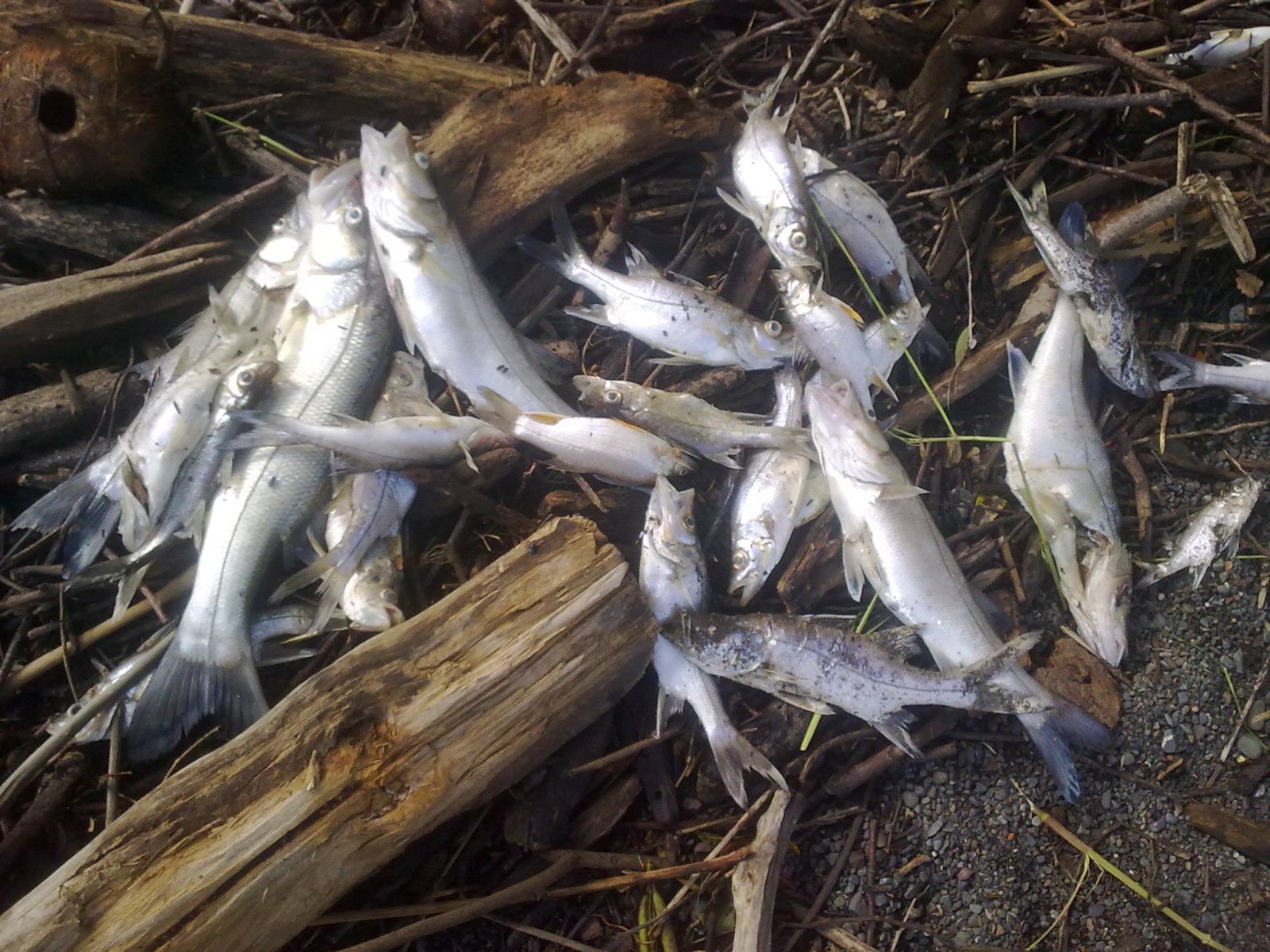
On Tuesday evening, September 3, local fishermen in Nosara found thousands of dead fish and shrimp in the Nosara River, and the suspected cause is agrochemicals.
Juan Carlos Cordero, chief of the Tourist Police delegation in Guiones, reported that the size of the dead fish, mostly bass, snook and gualajes, are around 15 inches and most were found in the river mouth.
One of the first to see the dead fish about 8 kilometers upriver from the mouth of the Nosara River was Eduardo Hernandez Jiron, who called his brother, Javier Hernandez Jiron, of the fishing association ASOPPERNO, at about 4 p.m. on Tuesday. Javier, in turn, contacted authorities
Another person who reported the incident was fisherman and veterinarian Carl Wells, who said, “There was a large fish kill last night (Tuesday) on the Rio Nosara, likely due to poisoning of the river to harvest fish. There are thousands of fish, mostly snook that are flowing out into the ocean, plus other species including shrimp and kril.”
The Ministry of Environment and Energy (MINAE) was called but they couldn’t arrive to Nosara until Wednesday afternoon, so the fishermen decided to take samples of the dead fish themselves.
But when officials from the Tempisque Area of Conservation (ACT) arrived to inspect the river from Varillal to the mouth in Nosara, Francisco Ramos, coordinator of the hydraulic resources program of ACT, said that at this point they aren’t able to take samples because the tide has diluted the water and the fish are already decomposing. He said the ideal moment to take samples of the fish is when they are dying but not dead yet, at which point they should be washed, wrapped in aluminum foil, put in plastic bags and conserved on ice for transportation to the laboratory.
Ramos said the most important thing to do is identify the source of the contamination. Otherwise no denunciation can be filed. In this case, it is too late to find the source. However he did affirm that “here we believe that it is a product of agrochemicals.”
Because the cause might be chemical rather than organic, Ramos said it is best to not eat fish from the river for 15 to 22 days as a provisional measure to give the river time to clean itself.
This is not the first time dead fish or shrimp have appeared in the Nosara River. In April of 2012 on at least two occasions hundreds of fish and shrimp were found dead. The next time something similar occurs, Ramos encouraged people to call him directly at 2651-8115 or 8868-2259.







Comments